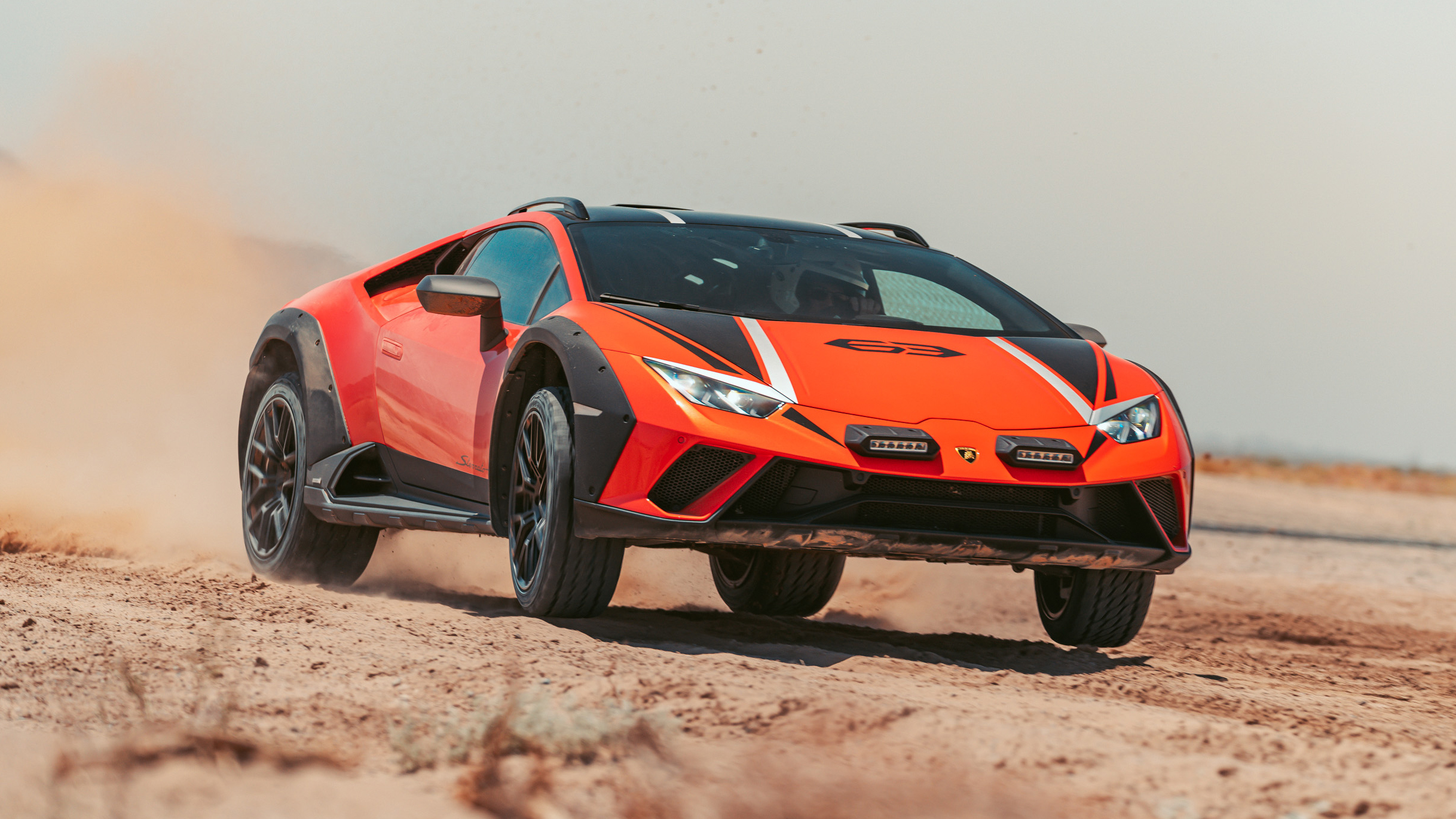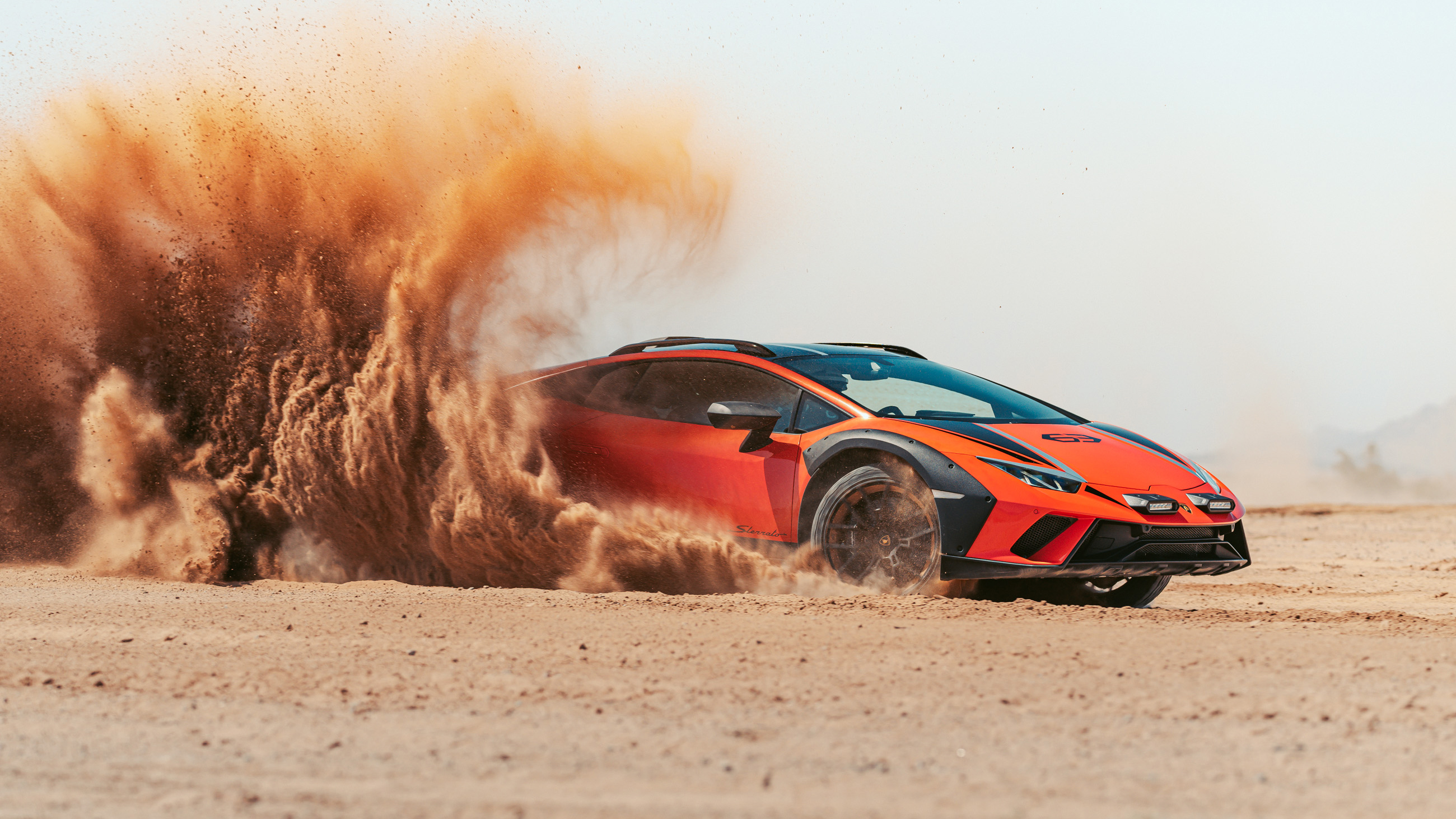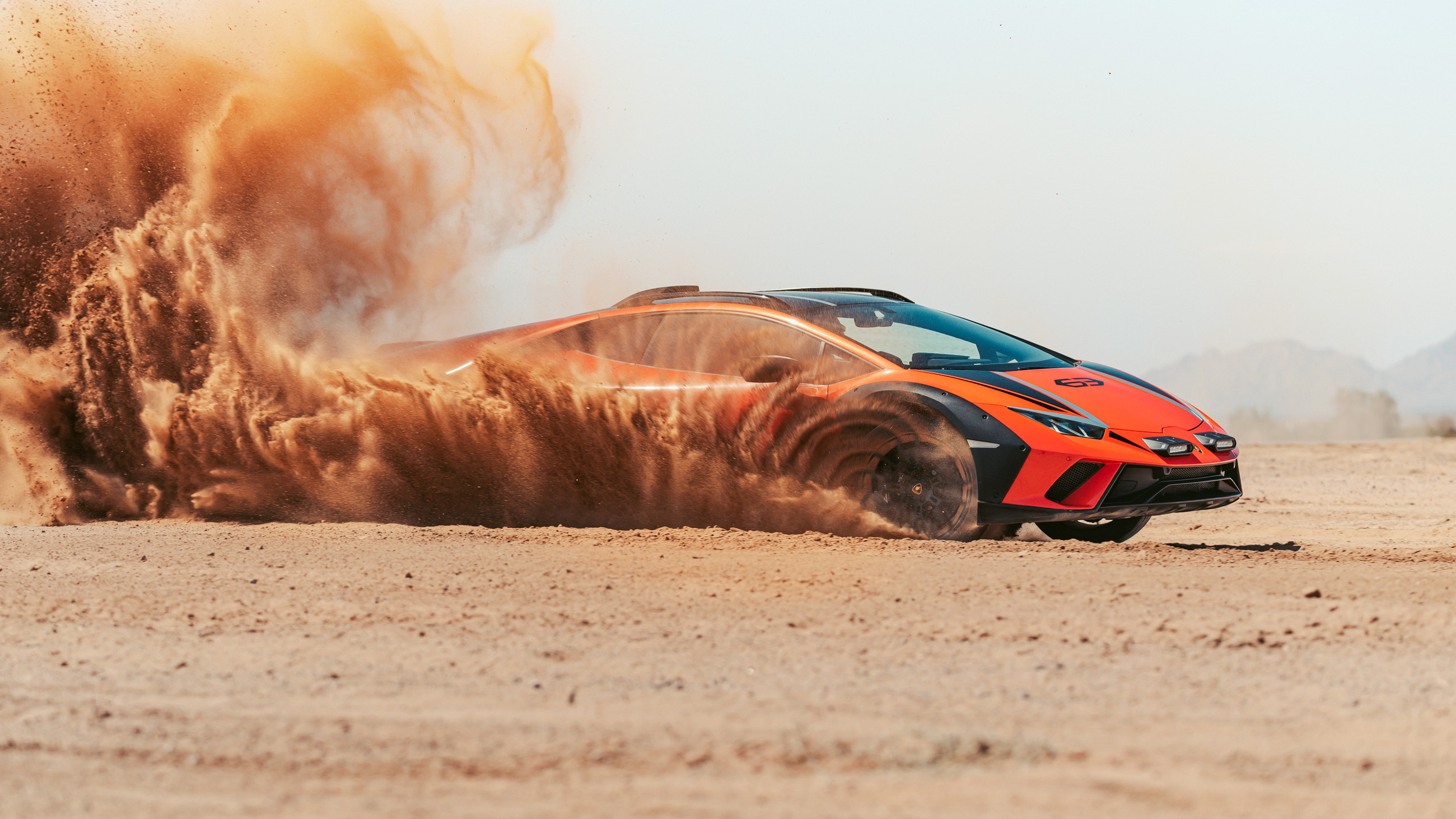
Lamborghini Huracan Sterrato review: a jacked-up, armoured, off-road psychopath
£232,820 when new
What’s this? Is Lamborghini going rallying?
Nope, but you might be, if you’re one of the 1,499 customers who’s managed to pay £232,820 for a new Huracan Sterrato before they all sold out. The last ever Huracan V10 derivative - before Lambo’s best-selling baby supercar is put out to pasture next year, and replaced with a plug-in hybrid - is a jacked-up, armoured, off-road psychopath designed for smashing around sideways in the dirt.
Hang on, hasn’t Porsche just released a 911 Dakar that does the same thing?
It has, although Lambo assures us nobody has been copying anyone else’s homework. Whereas Porsche launched the Dakar in some gnarly Moroccan sand dunes, keen to prove how much punishment it could take (spoiler: a lot), Lamborghini says the Sterrato is targeted at faster, loose-surface rally stages, but is also huge fun on a normal racetrack.
Should we be surprised that two off-road supercars have arrived on top of each other?
Not really. Manufacturers are aware they can’t keep adding power and speed, both of which breached sensible levels a long time ago, so they need to find new avenues to fun. A car that offers all the noise and drama of a traditional supercar but adds Mad Max styling and access to heroic oversteer at lower speeds, is one possible answer.
Also, if you’ve ever driven a supercar anywhere other than a perfectly smooth road or track, you’ll know that they can be a bit of a pain. A side effect of more wheel travel and ride height should be more comfort and compliance on cracked and broken public roads. Win-win.
Where did you drive it?
At the Chuckwalla Valley Raceway near Joshua Tree National Park, California – a ribbon of tarmac dropped into the middle of the desert. The perfect opportunity for a bespoke half-tarmac, half-dirt rallycross circuit to show off the Sterrato’s appetite for both surfaces. Reader, it wasn’t a terrible day out.
Specs… hit me.
You have to make do without the spicier engine from the Huracan STO and Technica, which means 602bhp from the still-glorious 5.2-litre V10 through a seven-speed twin-clutch gearbox… more than enough for spinning all-four tyres on dirt. Launch it on tarmac and you’ll cover 0-62mph in 3.4 seconds, and hit the limiter at 160mph. That £232,820 price is £29k more than a Huracan Technica, it also weighs around 90kg more at 1,470kg dry.
And what are the upgrades to morph from street to rally spec?
New front and rear bumpers and side skirts are reinforced and reprofiled for better approach and departure angles. A front skid plate and underbody armour does what it says on the tin. Bonnet mounted spotlights bring the bobble hat vibes, and match the wheel arches with their purposefully-crude exposed bolts.
The track is 30mm wider at the front, 34mm wider at the rear, the ride height is increased by 44mm and there’s 25 per cent more wheel travel at the front, 35 per cent at the rear – although the adaptive dampers are the same as other Huracans. Bespoke, chunky-tredded Bridgestone Dueler tyres on 19-inch wheels front and back fill the arches nicely, and they’re run flats – giving you a fighting chance if you go pop in the middle of nowhere.
With dirt, sand and all manner of things being lobbed about by the tyres, a new roof scoop feeds clean air into the engine, but means rear visibility is non-existent. Roof rails allow you to put things on the roof, although unlike the 911 Dakar there are no roof tents or racks offered on the options list. Inside, besides some Sterrato badging, a new pitch and roll indicator and a compass function on the central screen, it’s identical to the Huracan as we know it.
Top Gear
Newsletter
Thank you for subscribing to our newsletter. Look out for your regular round-up of news, reviews and offers in your inbox.
Get all the latest news, reviews and exclusives, direct to your inbox.
How does it perform on track?
Remember the Ariel Nomad? Remember how it was hilarious on a racetrack precisely because it wasn’t particularly suited to it? Same thing here: all the piercing, shrieking V10 histrionics we know and love, but exaggerated roll and dive, plus less grip on the all-terrain tyres, mean the Sterrato just loves to lean over and settle into big, benign drifts. Clearly, it’s a fair bit slower around a lap than a standard Huracan, but I guarantee you won’t care, as you fling it about with ever-decreasing mechanical sympathy.
However, you don’t buy a Sterrato just for wobbling about at your local track day, you buy one to go places few Lambos have ever gone before…
What’s it like on the dirt?
Pure magic. I mean, driving a fast car on a circuit is fun, but this is on another level. Select the new ‘Rally’ mode on the wheel mounted toggle, which tells the permanent AWD to favour power to the rear wheels and loosens the ESC (then turn the ESC off completely) and you’re sideways everywhere, holding drifts for days, linking corners together.
Turn the wheel more in a tight bend and the car automatically brakes the inside rear, hooking you into the apex, then leaving you alone to ride it out on the other side. By our fifth or sixth lap the course is cutting up, thick ruts of dirt that the Sterrato crashes into, hops over and keeps going, absorbing it all and keen for more.
Why is this so much fun? Because it’s controlled hooliganism… I’m getting all the sensations you associate with a supercar - the noise, the snap from the gearbox, the lightning-fast steering, the low driving position - but I’m so much more involved, so much busier behind the wheel. The margins are wider, limits lower and speeds slower than a hot lap in a Huracan STO, but the sense of satisfaction when you find your flow is, for me, even greater. If the STO’s mission is to maximise speed and drama, the Sterrato is purely here to have fun.
And on the road?
Something would have to go drastically wrong for this not to be better than the standard Huracan on the road. And all that extra ride height, that extra wheel travel, does indeed make the Huracan a comfier, more useable place to be. Slot it into Strada, which kills off the engine drone and if you pack light you could drive this as far as you like. The tyres are a little noisier, but like the Porsche 911 Dakar (which wears bespoke Pirelli Scorpions) no more than a standard Huracan on winters. Witchcraft. Crank it up into ‘Sport’ mode and for the odd point and squirt it’s just as noisy and just as fast as any other Huracan. In fact, I’d wager this is the fastest of the lot when the road surface deteriorates… which is basically the entirety of the UK.
I’m sensing you’re a fan…
I am, for multiple reasons. You probably live nearer some dirt, mud, gravel or sand than a racetrack, and because on those surfaces you can exploit the Sterrato’s talents more easily, it’s more fun for mere mortals, more of the time. It’s less-draining on the road, hilarious on track, and transcendental on a loose surface. If a supercar’s job is to not take itself too seriously and to make the driver and everyone around them smile… then this has a claim to being the best supercar in the world.
Photography: Mark Riccioni
Featured

Trending this week
- Car Review
BMW iX3






